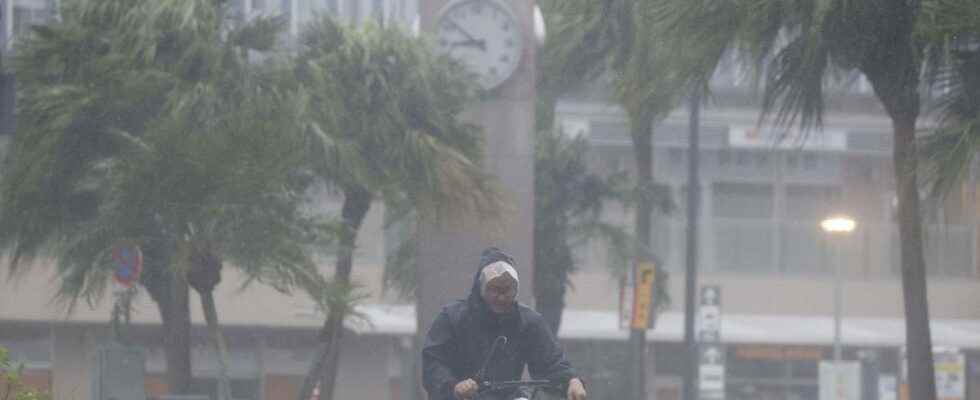Thousands of people took shelter in shelters in southwestern Japan on Sunday as powerful Typhoon Nanmadol headed towards the region, prompting authorities to recommend that nearly three million residents evacuate.
The Japan Meteorological Agency (JMA) issued a “special warning” for the department of Kagoshima, in the south of the large island of Kyushu, to warn the inhabitants against the high risk of severe weather.
Read alsoA powerful typhoon approaches the southern islands of Japan
As of Sunday morning, 25,680 homes in Kagoshima and neighboring Miyazaki Prefecture were already without power, while regional rail services, flights and ferry crossings were canceled, according to local utilities and transport services.
“Unprecedented” danger
The JMA has warned that the region could face danger “unprecedented” due to strong winds, raging waves and torrential rains. “The greatest caution is required”said Ryuta Kurora, head of the JMA’s forecasting unit, on Saturday. “It’s a very dangerous typhoon”.
“The wind will be so violent that some houses could collapse”Ryuta Kurora told reporters, also warning of floods and landslides.
So far, 2.9 million Kyushu residents have received urgent evacuation recommendations, according to the government’s Fire and Disaster Management Agency, and Kagoshima Prefecture officials said more than 8,500 people have s were already in shelters on Sunday morning.
Ryuta Kurora urged residents to evacuate before the worst happens and warned that even in solid buildings they should take precautions.
“Don’t go near the windows”
“Please get to strong buildings before high winds start blowing and do not go near windows, even inside strong buildings”he said at an overnight press conference.
On Sunday morning, high-speed train traffic in the region was suspended, along with regional train lines, and state broadcaster NHK said at least 510 flights had been cancelled.
On the ground, an official from the Kagoshima department told AFP that no injuries or major damage had been reported so far, but that conditions were deteriorating. “The rain and the wind are getting stronger and stronger. The rain is so heavy that you can’t really see what’s outside. Everything seems white”he said.
At 9 a.m. (0000 GMT), the typhoon was 80 km southeast of the small Japanese island of Yakushima and the wind was blowing at 252 km / h. It is expected to make landfall in Kyushu, further north, on Sunday evening before turning northeast and sweeping Japan’s main island of Honshu through Wednesday morning.
The typhoon season peaks from August to September in Japan where it is marked by heavy rains that can cause sudden floods and deadly landslides.
In 2019, Typhoon Hagibis hit Japan during the Rugby World Cup, killing more than 100 people. A year earlier, Typhoon Jebi shut down Kansai airport in Osaka, killing 14 people. And in 2018, floods and landslides killed more than 200 people in western Japan during the rainy season.
Scientists estimate that climate change is increasing the intensity of storms and extreme weather events.
